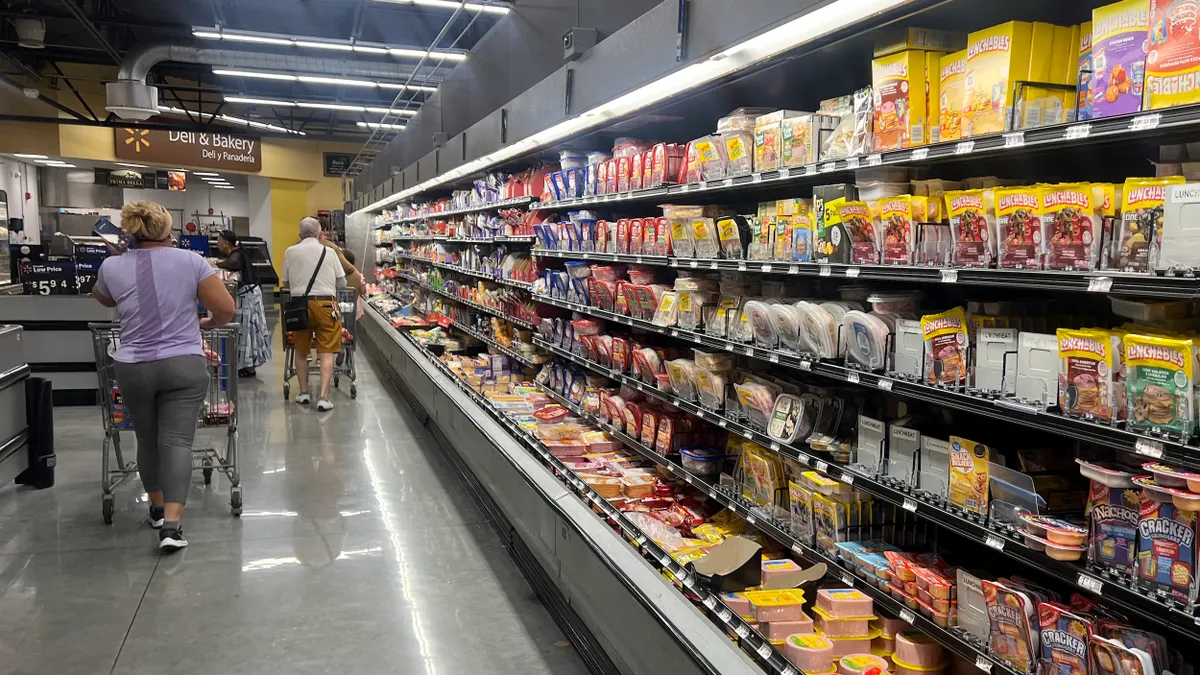Dive Brief:
- Procter & Gamble may be engaged in industry conversations, and is working with guidelines from both ISRI and the Association of Plastic Recyclers, but its associate director of corporate R&D recognized that frustrations remain around an ever-changing material stream. "The MRFs are the last ones to find out about our new designs," said Stephen Sikra during WASTECON's MRF Summit.
- In response to multiple audience questions about extended producer responsibility (EPR), Sikra said P&G works in markets with those policies, and "we take responsibility for our packages and products throughout the supply chain," but prefers a more voluntary ("VPR") structure. ISRI President Robin Weiner and SWANA CEO David Biderman expressed similar support for voluntary, market-based approaches rather than EPR.
- Speaking more broadly, Sikra said "recycling is nowhere near the rate where it should be, anywhere in the world," and touted P&G's progress towards its 2020 goals. The company is aiming for 20% packaging reduction (14% to date), 90% recyclable packaging (86%) and 52,000 metric tons of post-consumer recycled content (34,000). By 2030, P&G aims to make 100% of packaging recyclable or reusable, and eliminate the flow of all company plastics into waterways.
Dive Insight:
As the recycling industry adapts to changing cost structures, the topic of EPR has been gaining renewed attention — both in terms of packaging design and end-of-life management. While it remains a contentious one in terms of how government or corporate involvement would affect the process, as opposed to finding ways to strengthen the open market system, the broader concept of brands needing to step up is on people's minds.
"I think large brands have externalized the cost of disposal of containers onto the waste side and I think we need to stop that," said Biderman, calling out Amazon in particular.
While neither SWANA or ISRI backed the idea of a Canadian or European style regulatory structure, they did like the concept of better communication.
"We're often the last ones to know and we don’t like to be surprised," said Weiner.
Communication between large brands, recycling companies and trade associations has improved, but is still far from perfect. Sikra explained that companies may be hesitant to share specifications with even their closest MRF partners before new products hit the shelves. That leaves all involved playing catch up when it comes to the latest new label on a bottle or whole new categories of material such as flexible packaging.
Sikra noted the usual points about how multi-layer flexible packaging in particular has a smaller environmental footprint, and is part of ongoing industry recycling pilots, but seemed to come at with a slightly different definition of recyclability than ISRI. In his view, regional collection and separation access defines a product as recyclable. For Weiner, that process specifically needs to result in commodity grade materials that can become new products.
This last step of having clear end markets to theoretically close the loop on material is seen as key to both helping strengthen domestic recycling infrastructure in the U.S. and helping brands meet all of their goals. As Sikra pointed out, and others have many times before, it's not always so simple as a certain type of plastic getting recycled back into the same exact thing again due to color specifications and other factors. Yet to some, the increasingly popular packaging industry term of "chemical recycling" doesn't quite ring true either.
As these questions about designing for recyclability and using more recycled content in design continue to play out in parallel, the industry can expect many more complex discussions in the years ahead. Now that many of the packaging world's biggest brands have set these bold future targets they'll have no choice but to keep getting more engaged in that dialogue along the way.










